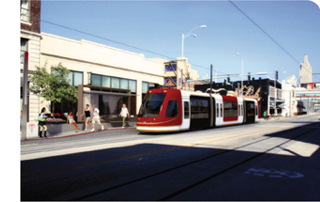Building from the Roots
The pieces of a successful Downtown are in place. Now, it's a matter of bringing the people in—a task that will test a city's true resolve.

We all know the successes: Sprint Center. Power & Light District. Kauffman Center for the Performing Arts. New housing units. A thriving arts community.
For more than a decade, Kansas City has been banging away at the task of renewing the commercial core of a metropolitan area that is home to more than 2 million people. More than $6 billion in public and private money, by most estimates, has gone into that civic facelift.
And the results have begun to show where it matters: With numbers of people who choose to make Downtown their home. From an estimated low-water mark of about 10,000 people when the renewal effort began, the greater Downtown area has nearly doubled the population of people living there. The harder job, perhaps, may be doubling that again, to reach the 40,000-resident level—a figure that those who are paid to know about such things tell us is the level needed to create a thriving, self-sustained Downtown community.
Will we get there? There are certainly reasons for optimism.
“The decline of Downtown was something that occurred over a 35-year cycle,” says Bill Dietrich, president and CEO of the Downtown Council of Kansas City. “Now, in just 10 or 12 years, we have reclaimed Downtown as the headquarters for the metropolitan area.”
The bigger pieces of that puzzle carried eyebrow-raising price tags: $850 million for the mixed use Power & Light District, which restored a compact entertainment zone and retail core to the area; $414 for the Kauffman Center, largely private money, but money that could have as easily gone to other civic causes absent the push for the PAC; $276 million for the Sprint Center, which six years after its opening is still without a professional sports team that many hoped would draw crowds to the adjacent P&L District.
But in some ways, those might have been the easy pieces. For each has visibility that captured the attention not only of Downtown advocates, but the entire region. Getting more granular in amassing a sustainable population could be more challenging. There are, however, early indications that the community is rising to that challenge.
The Muriel McBain Kauffman Foundation, which contributed heavily to the performing arts center funding effort, has pledged $20 million toward a goal of moving the Conservatory of Music and Dances off of the Plaza-area campus of the University of Missouri–Kansas City. Getting that done, boosters say, would add nearly 1,000 employees and students to the mix of daily life Downtown—many of whom would want to live close to work and school.
A $102 million streetcar system, running 2.2 miles from the River Market to Crown Center, has so far withstood legal challenges over the much-criticized transportation funding district and the financial burden placed on those living within a few blocks of the planned line. But already, developers have stepped forward with plans for revitalizing buildings along the route, an economic-development consequence of the system that had been foretold by supporters.
The federal government is expected to add 1,000 employees to the Downtown job scene with relocation of the General Services Department and other offices. Not only will that infuse additional people into the daily mix, but the 150,000 square feet needed for that move will help take a bit out of an inordinately high office vacancy rate Downtown.
And other projects in the works or proposed would take some of the biggest—and currently, the most under-used—office buildings Downtown and turn them into mixed-use venues. That would bolster the number of retail offerings in the central business district and address a crushing demand for apartment space—realty professionals say the occupancy rate of apartments Downtown exceeds 95 percent.
Those vital pieces, Dietrich says, will help set the stage for the next phase of Downtown’s emergency: “Phase II is the Volker area near the Plaza. If you can do that, you’ve tied the economic engines on that corridor together. That’s the next big thing.”
The bottom line, those who push for a better Downtown say, is that the work is far from over. In fact, if Downtown Kansas City is to become the kind of community that people in other cities talk about as being cutting-edge, the work will never stop. It stopped in the post-war years, as a metropolitan area averted its eyes while residents rushed into the sprawl of the suburbs.
But they’re no longer looking away. Downtown Kansas City is, at last, in sharp focus.